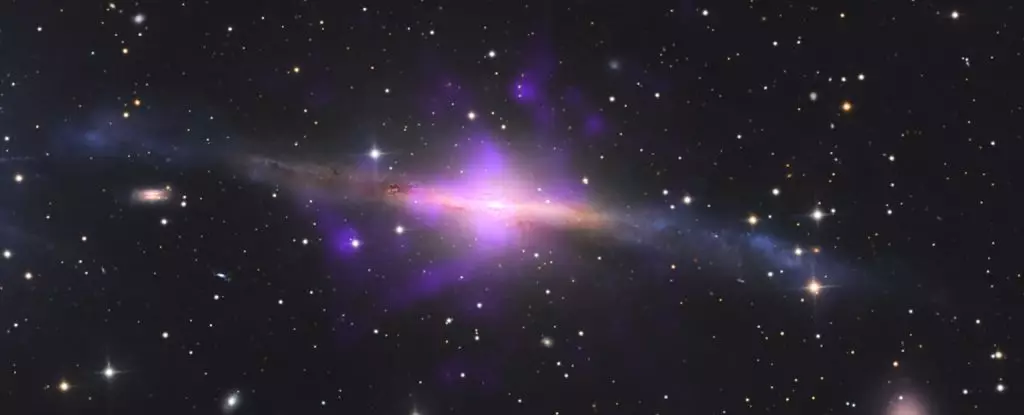The cosmos continually astonishes us with its intricate phenomena, and the latest revelation concerning the galaxy NGC 5084 is a veritable testament to this notion. Situated approximately 80 million light-years from our Milky Way, this lenticular galaxy has recently been spotlighted for its eccentric supermassive black hole, which holds an unusual orientation that has left astronomers scratching their heads. The details surrounding this discovery underscore the importance of utilizing both historical and contemporary astronomical observations to uncover the mysteries of our universe.
At the heart of NGC 5084 lies a supermassive black hole of considerable mass—estimated at 45.7 million times that of our Sun. What sets this black hole apart, however, is not just its sheer mass, but also its peculiar position; it’s tilted on its side, with its rotational axis found parallel to the galaxy’s disc. This unusual orientation is strikingly reminiscent of anomalies found in other realms of the cosmos, notably the planet Uranus, which similarly spins on its side. The implications of such a tilt raise critical questions regarding the formation and evolution of black holes within their galactic environments.
This discovery was borne out of a rigorous examination of three decades of archival data. A team led by astronomer Alejandro Borlaff employed new image analysis techniques applied to observations from various telescopes, including NASA’s Chandra X-ray Observatory. This exceptional approach allows for a mosaic of historical data to reconstruct the galaxy’s past—a process that showcases the depth of knowledge one can glean from previously collected information.
The research team stumbled upon intriguing evidence in the form of four long, X-ray-emitting plasma plumes emanating from the galactic center, resembling an “X” shape. Such jets are symptomatic of dynamic activity surrounding a supermassive black hole, where infalling matter does not entirely succumb to the black hole’s grasp. Instead, some material is expelled as jets along the black hole’s magnetic field lines. In this particular case, two jets aligned with the galactic plane while the other two appeared embedded within it—an inconsistency that led to crucial insights about the black hole’s peculiar orientation.
This disarray suggests that the supermassive black hole was not always tilted as observed. Instead, it indicates a significant event in the galaxy’s history that could have prompted this bizarre transformation—a potential merger with another galaxy harboring its own supermassive black hole. Such galactic events are not uncommon; however, each occurrence contributes markedly to our understanding of cosmic behavior and structures.
To deepen their analysis, the researchers conducted further observations using the Hubble Space Telescope, the Atacama Large Millimeter/submillimeter Array, and new data from the Apache Point Observatory. Borlaff likened their investigative efforts to piecing together elements of a crime scene, where multiple data sources offer a clearer picture of the underlying processes at play. In their pursuit of understanding, the team confirmed the presence of the jets and identified a band of dust surrounding the black hole, indicative of its accretion disc, but notably misaligned—hinting further at the black hole’s extraordinary state.
Understanding the mechanical nuances behind such a galactic body and its behavior enriches our comprehension of gravitational dynamics and galaxy formation. The misalignment of the dust ring relative to the galactic plane evokes the need for further research into whether the black hole’s irregular position results from earlier cosmic collisions.
The recent findings around NGC 5084 open a new chapter in the study of supermassive black holes and their interaction with galactic structures. It’s a compelling reminder of how much remains to be explored, even in galaxies that have been studied extensively for centuries. With NGC 5084 revealing unexpected behavior, it spurs the scientific community to reconsider previous assumptions about black hole orientations and to explore the broader implications of such phenomena across various galaxies.
As we continue to parent our curiosity of the universe, findings like those emerging from NGC 5084 play a crucial role in reevaluating established cosmic narratives. The ongoing exploration and application of advanced imaging technologies in astrophysics offer a glimpse into a future where previously accepted theories may undergo significant revisions, thereby paving the way for a deeper understanding of our ever-evolving cosmos.


Leave a Reply